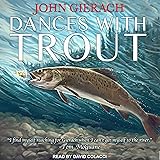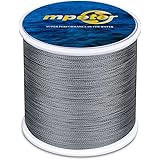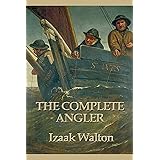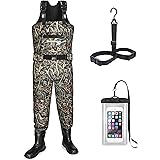Navigating the complexities of river fishing often presents a significant challenge. Anglers frequently struggle to locate productive holding lies for various freshwater species. However, a strategic understanding of riverine hydrodynamics and piscine ethology can dramatically enhance success in river fishing endeavors.
Understanding Riverine Habitat Dynamics for Optimal River Fishing
Each river section presents unique ecological conditions. These environments dictate species distribution and foraging behaviors. Recognizing these patterns is paramount for effective river fishing.
Fast-Flowing Streams and Their Inhabitants
Rapidly flowing streams are typically characterized by higher dissolved oxygen levels. Their substrates are often composed of gravel and larger rocks. Such conditions are conducive to species like trout, suckers, and smallmouth bass. These fish possess adaptations for rheotaxis, positioning themselves effectively in swift currents.
Foraging activity in these areas commonly targets aquatic insects and crayfish. Lures imitating these prey items prove highly efficacious. Fish here minimize energy expenditure by seeking subtle current breaks or benthic zones.
Moderately Flowing River Ecosystems
Moderately flowing rivers often exhibit increased depths and warmer water temperatures. This environment supports a broader ichthyofaunal diversity. Species from both fast and slow water habitats may be encountered.
Anglers may encounter northern pike, musky, walleye, and catfish. Panfish like bluegills and rock bass also thrive here. The presence of varied forage, including numerous baitfish, suggests a mixed lure approach. Imitative presentations for minnows, worms, and insects are often successful.
Slow-Flowing River Systems and Their Angling Potential
Large, slow-flowing rivers are typically the warmest, featuring sandy or muddy bottoms. Extensive aquatic vegetation is a common characteristic. These conditions favor scavenger species and ambush predators.
Catfish, carp, and bullheads are frequently targeted. Largemouth bass, perch, and bowfin also inhabit these systems. A diverse array of presentations is suitable given the varied species and habitat.
Mastering Current Dynamics and Fish Positioning
Fish in rivers are masters of energy conservation. They position themselves to intercept food with minimal effort. Identifying these strategic holding areas is a critical river fishing skill.
The Significance of Current Breaks
Any object obstructing the main flow creates a current break. Fish utilize these zones for refuge from strong currents. They often become prime ambush points for passing prey.
Casting lures or baits into the main current, allowing them to drift into these slack water areas, is highly effective. This technique replicates natural food delivery. It often triggers immediate strikes from holding fish.
Exploiting River Eddies
Eddies are formed behind substantial current-blocking structures. Water flows in a circular motion within these zones. Fish actively concentrate within eddies for feeding and resting.
Presenting a lure upstream of an eddy allows it to drift naturally into the slack water. This presentation mimics vulnerable prey items. Trout, pike, and smallmouth bass are commonly found in these preferred microhabitats.
Deep Holes and Their Productive Waters
Deep holes represent critical holding areas for many riverine species. These depressions offer thermal refuge and reduced current velocity. They are often created by erosion around significant structures or outside river bends.
The majority of river current flows above these deep pockets. This enables fish to conserve energy while observing for food. Vertical jigging or slow-rolling bottom-hugging lures can be productive.
Navigating River Structures for Enhanced River Fishing Success
Specific physical features within a river system consistently attract fish. Anglers skilled in identifying and fishing these structures will experience greater success.
Fishing River Bends and Their Depth Variations
River bends exhibit distinct depth profiles. The outside edge is typically deeper due to erosional forces. The inside edge generally presents a shallower, more gradual slope.
Targeting the deeper outside bends is often productive. Predator fish frequently stage in these areas. They ambush prey swept around the turn by the current.
Productive Riffles and Runs
Riffles are shallow areas with turbulent water flowing over small rocks. Runs are deeper, smoother sections following riffles. Both are highly oxygenated and provide excellent feeding grounds.
Many species congregate in these areas, especially if sufficient depth is present. They wait for dislodged food items. Drifting baits or small lures through these zones can yield significant results.
The Attraction of Fallen Trees and Logjams
Fallen trees and extensive logjams create complex underwater structures. These provide multifaceted habitat for both prey and predator species. They offer current breaks and numerous hiding places.
Minnows and insects congregate within the branches for safety. Larger predatory fish lurk nearby, awaiting opportunistic strikes. Casting parallel to these structures is often an effective strategy.
Inlets, Culverts, and Converging Currents
Tributary stream inlets or stormwater culverts introduce new water into the main river. This creates distinct current seams and can deliver fresh nutrients. These confluence points are natural fish magnets.
Predator species position themselves along these current edges. They anticipate easy meals from the inflowing waters. Targeting these convergence zones with various presentations can be very effective.
Bridges and Their Associated Deep Waters
Bridge support pillars create significant scour holes downstream. These deep depressions offer substantial refuge from strong currents. Fish readily utilize these man-made structures.
The main current often passes over these deep holes, providing a convenient food conveyor belt. Casting upstream and allowing a lure to sink into the scour hole is a proven tactic. This capitalizes on the fish’s energy-saving behavior.
Rapids, Dams, and Waterfalls: Concentrated Hotspots
Areas below rapids, dams, or waterfalls are almost universally productive. They create a diverse array of habitats, including varied currents, depths, and bottom substrates. The turbulent water provides high oxygen levels.
These locations concentrate fish due to abundant food and suitable holding lies. Locating deep holes or prominent eddies in these powerful zones will typically reveal significant fish populations. Extreme caution must be exercised when fishing near these powerful hydrological features.
Effective Presentation and Tactical Adjustments for River Fishing
Successful river fishing requires adapting techniques to specific conditions. Optimal lure selection and casting strategies are paramount. Adjusting for water levels ensures consistent results.
Lure and Bait Selection for River Conditions
Matching the prevalent forage in a given river section is crucial. Fast-water species often prefer imitations of insects, crayfish, or small minnows. Larger river predators may key on substantial baitfish or artificials.
Worms and flies are excellent for drift fishing. Crankbaits and inline spinners perform well with slow retrieves. These mimic natural prey effectively in varied current speeds.
Strategic Casting and Retrieval Techniques
Casting straight across the current and allowing a bait to drift downstream is highly effective. This presentation mimics a natural food source. Many species, including trout and suckers, await such opportunities.
For lures, the current itself can impart sufficient action. Minimal retrieval may be necessary. Slowly working a crankbait or spinner along current edges often provokes strikes. This controlled presentation targets fish holding just out of the main flow.
Adapting to Varying Water Levels
Low water periods offer unparalleled insight into river topography. Deep holes and hidden structures become visible. This allows for meticulous scouting of productive river fishing locations.
Conversely, high water conditions necessitate different strategies. Fish move closer to banks or into flooded bays. These areas provide sanctuary from the accelerated current. Targeting these calmer, shallower zones is key during elevated flows.








